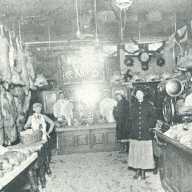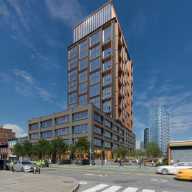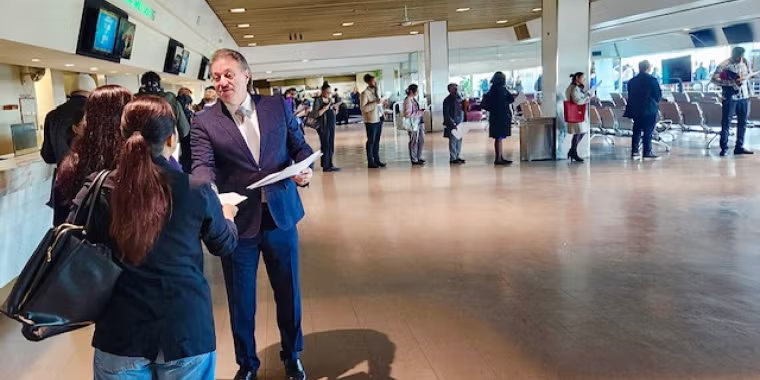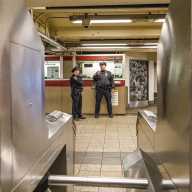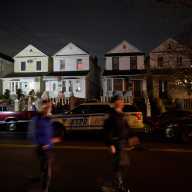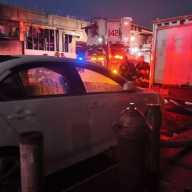Two years ago, Grace Ogiehor and other Nigerian immigrant nurses noticed an alarming trend in the health of their fellow countrymen living in Queens. The numbers showed a large amount of Nigerian and African immigrants dying from various coronary diseases that could be prevented if diagnosed early and medically treated.
As a way to reverse this trend, she and other immigrants formed the Nigerian Nurses Association to make Africans aware of health-care services in the borough and to dispel cultural beliefs to seek medical treatment only if they are dying or in an emergency.
Publicizing Health Services
"We want to push that you dont have to be sick to go to the hospital," said Ogiehor, whose organization goes around the borough to various civic meetings and houses of worship and places articles in local immigrant news weeklies to inform Africans of health services and to test people for high blood pressure.
The abnormal death rates from heart disease are not solely relegated to African immigrants but to other New Americans, as well as minority and low-income groups living in Queens.
The point was highlighted Thursday night when Queens Borough President Helen Marshall and Manhattan Borough President C. Virginia Fields held a public hearing at Queens Hospital Center, on the boroughs health disparities.
Health-care providers and activists testified to the reason why pockets of the borough, where these marginalized groups live, have higher death rates from certain preventable diseases and have less access to medical care.
The 2002 neighborhood statistics from the citys Department of Health and Mental Hygiene show that Jamaica, the Rockaways and western Queens are the areas most affected by this disparity. According to the departments numbers, deaths from diabetes or heart disease in Jamaica, home to 285,568 people, the majority of whom are African-Americans and immigrants from the islands of Jamaica, Guyana and Haiti, exceeds city averages by 55% and 15%, respectively. In the Rockaways, where African-Americans are also the largest demographic, and an estimated 7,000 undocumented immigrants live, deaths from heart disease are 90% higher than the citys average. Prenatal care and infant mortalities in both these sections are also worse than the citys average.
Those who testified at the hearing largely attributed the problem to cultural, communicative and economic barriers.
"No matter how elaborate the health services, unless you can move those people from their distrust, you will not reach these unreachable," Lionel Clarke, director of outreach programs for the Rockaway/Inwood Ministerial Coalition, told The Queens Courier.
Outreach Program
He testified at the public hearing and spoke about the efforts of his organization to persuade undocumented immigrants and low-income families living in the southern peninsula to utilize medical services.
His outreach program trains individuals as health advocates, going door-to-door to educate Rockaway residents, many of whom live in public housing. Clarke believes the two main barriers for undocumented workers in these communities are low health literacy and fear that accessing public services will attract unwanted attention and possible deportation. To gain their confidence, he said, his organizations outreach program follows a grassroots approach, using people from the community as health advocates. To get people screened and treated, these advocates will even go so far as to escort and transport an individual to a medical facility.
"We try to change behaviors and develop trust between service deliverers and those who receive the care," he said.
Ogiehor, who also spoke at the hearing, said that cultural beliefs among immigrants can also play a factor in not accessing health services. Many in the African community, she said, only rely on medical treatment in dire times. Money also plays a factor in this decision, she said, noting that in the mindset of an immigrant struggling to make a living, time spent waiting in an emergency room is time lost working.
"They see it as time away from making money and that no real rewards come from a checkup," she said.
Some argue, though, that the problem is more than just language and cultural barriers but a lack of access to medical care due to a paucity of health facilities and the high cost of treatment.
"There are fewer ways of people getting help here due to the lack of insurance and lack of practitioners," said State Senator John Sabani, who covers western Queens.
To draw attention to health disparities in his district, he held free multilingual events during the last two weeks of April. One event offered free cancer screenings with translators, to accommodate Spanish, Chinese, Korean and Bengali immigrants. Another event was an asthma presentation and screening, in English and Spanish.
A spokesperson for Councilwoman Helen Sears at the public hearing also attributed the problem to a lack of healthcare facilities, asserting that residents will utilize them if they are there. He referred to Sears highly successful seminar on cervical cancer for Latina women last December, which attracted a packed house despite the inconvenience of a snowstorm.
The Cost Factor
But even where there are medical services for the uninsured the borough has two public hospitals, Queens Hospital Center in Jamaica and Elmhurst Hospital, and 22 off-site clinics and school health programs costs can still be overwhelming.
Fern Zagar, the chief administrator of community and mental health services at the Joseph Addabbo Health Clinic in Rockaway, said patients still have difficulties meeting payments, despite a sliding scale fee and a $45 minimum charge.
"They do not have a medical home because they cannot afford it," Zagar told the public hearing panel, noting that 84% of the Addabbo Centers patients live below the poverty level. She added that, with only $1 million coming from federal subsidies, more funding, from all levels, is needed.
The borough president intends to use the testimony from the hearing as a resource in compiling a report on the borough and to make recommendations on how to reconcile the disparities. But, during the hearing, Marshall also shared her thoughts on what could help the borough.
She suggested that more clinics should be placed within public housing to close transportation gaps. Marshall also stated her goal of one day having a medical clinic campus at Queens Hospital, where students studying to be doctors can do their residency, which would complement the citys public medical college, the Sophie Davis School of Medicine, and bring more doctors to the borough.










